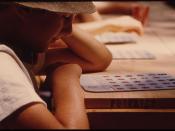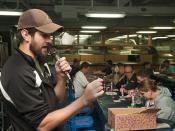Bingo can be traced back to the year 1530 in which a state run a lottery game. Lo Giuco de Lotto was originated in Italy where the game is still held every Saturday. 'Le Lotto' migrated to France in the late 1700s in a form similar to the bingo we know today, with a playing card, tokens and numbers read aloud.
Through the 1800's these lottery style games spread quickly throughout Europe and many offshoots of the game were created. One popular form of game, similar to that we play today had a player's card divided into 3 horizontal rows and 9 vertical ones. The first vertical row contained the numbers from 1 to 10, the second from 11 to 20, and so on until 81-90 on the ninth vertical row. The 3 horizontal rows each contained five squares with numbers in them and 4 blank ones. The caller would then draw from a bag of wooden chips numbered from 1 to 90.
The object of the game was to be the first to completely cover one of the 3 horizontal rows. The blank squares were considered free squares much like the free square in the bingo cards of today.
In 1929, a game called 'Beano' was played at a carnival near Atlanta, Georgia. The beano game's tools consisted of dried beans, a rubber number stamp and some cardboard. A New York toy salesman named Edwin Lowe, observed the game where players exclaimed 'BEANO!' if they filled a line of numbers on their card. Lowe introduced the game to his friends in New York where one of them mistakenly yelled 'BINGO!' in her excitement. 'Lowe's Bingo' was soon very popular and Lowe asked competitors to pay him $1 per year to allow them to call their games bingo as...


